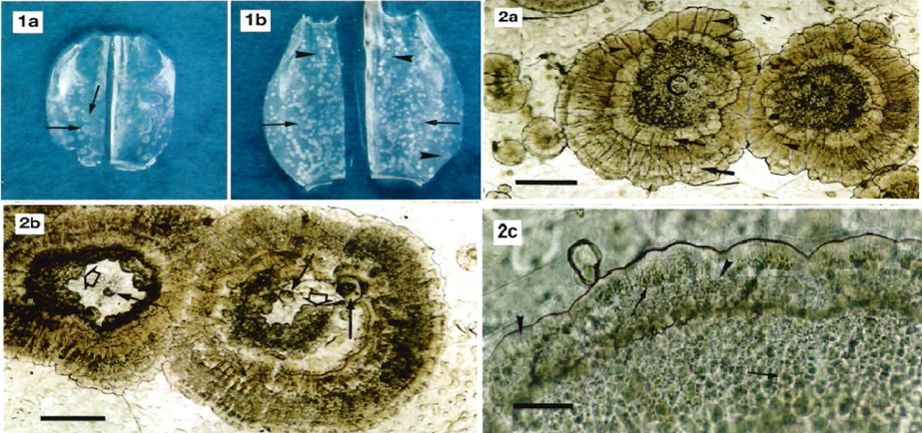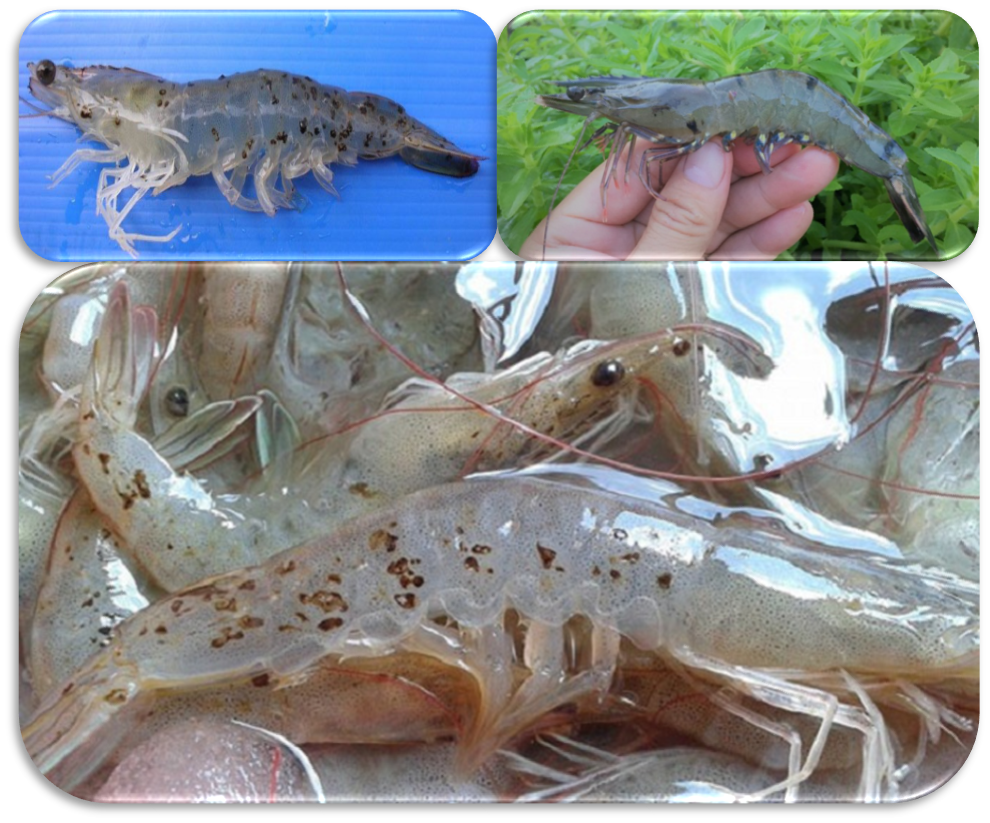This article helps shrimp farmers better get black spot disease and some effective technical measures for disease prevention and treatment. Black spot disease often occurs on shrimp, especially white leg shrimp. It appears more and more due to market demand. In addition, the high yield and density of shrimp farming produce a lot of waste for the environment. However, the infrastructure has not been met for the development of white leg shrimp culturing yet.
Causes of the disease
- The disease is caused by pathogenic bacteria in the pond. This bacteria can corrode the chitin shell of shrimp by secreting special enzymes. According to observation, it was found that the symptoms of the black spot are similar to those of acute hepatopancreatic necrosis disease (EMS/AHPNS/AHPND) caused by Vibrio parahaemolyticus.

Bacteria that cause black spot disease
- Shrimp are usually infected from 25 days old to the end of the crop. The mortality rate is 90%.
- Lack of nutrition and vitamin C create resistance.
- Shrimp often have a high rate of disease when the season changes, the water temperature rises higher than 29oC, and the exchange weather lasts from 5 to 7 days. The disease can occur at any time of the year.
- Multi-crop farming; high stocking density; water quality is not good; alkalinity is lower than 100 mg/liter; toxic gas concentrations such as NH3, NO2, and H2S exceed permissible limits; and the dissolved oxygen content is lower than 0.4 ppm.
- The disease development and infection rate depend on the environmental conditions of the pond, the weather, and the health of the shrimp.
Symptoms
- In the first stage from 1-3 days after infection.
Shrimp normally eat; the intestine contains feed; the liver has not shown any abnormal signs yet. However, the shrimp’s tail and antennae are eroded, which is misunderstood as a sign of shrimp biting each other.
- In the stage from 4-7 days.
The disease is more severe than in the first stage.
The shrimp antennae and tail turn red. The tail may be slightly swollen.
Small black spots appear and hide under the shell. Large spots appear on the thorax, appendages, body, and black gills areas.
The shrimp’s body appears white spot on the back and an empty gut. In addition, the hepatopancreas is pale and has many black spots on the shrimp’s shell.
The shrimp’s shell corrodes. The lower part of the shell may ulcerate. Therefore, it creates favorable conditions for other pathogens such as bacteria, fungi, and parasites to attack the body, leading to increasingly serious diseases and reducing eating.
- In the stage after 7 days.
Shrimp is seriously infected.
Shrimp lethargically swim on the edge of ponds, stop eating, have difficulty molting, and adhere to the old shell. In addition, it also loses its appendages when molting and slow growth.

Black spots on shrimp
Preventive measures
- Select reputable, quality, and specific pathogen-free postlarvae hatcheries.
- Designing and treating ponds according to technical procedures.
- The stocking density should be appropriate according to each model.
- Ensuring adequate aeration and oxygen supply system (greater than 5 mg oxygen/liter) for the best development of the bottom microflora.
- Maintaining alkalinity greater than 120 mg CaCO3 per liter. Supplementing minerals and bactericides to reduce the risk of shrimp infection.
- Periodically using probiotics from 5 to 7 days/time and culture according to biosecurity procedures.
- Frequently checking the bacterial density in the pond. It should not exceed 500 CFU/ml, periodically from 5 to 7 days/time.

Image of paddle wheels to enhance oxygen for shrimp ponds
- Managing diets well; supplementing vitamin C and synthetic minerals to create resistance and help the molting process for shrimp better. Depending on the conditions of the pond, the crop, and the weather, the amount of feed is adjusted accordingly.
Treatment methods
– For the pond environment:
+ Disinfecting bacteria from 3 to 5 times continuously, depending on the bacteria density in the pond.
+ After 2 days of disinfection, using probiotics to renovate the bottom pond with the dose of 2 to 3 times for 2 days continuously.
+ Intensifying paddle wheels and aeration to increase the oxygen content in the water.
+ Taking water samples to check environmental indicators and monitoring the bacterial density in the pond daily.
– For farmed shrimp:
+ Reducing shrimp diets from 20 to 50%, depending on shrimp health.
+ Strengthening the supplement of vitamin C, synthetic minerals, and digestive enzymes to increase the immune system of shrimp during the treatment period.
+ Antibiotics should not be used during treatment to avoid antibiotic resistance when bacteria in the water environment haven’t been controlled.
* Note:
It is possible to treat shrimp diseases, but shrimp will be in bad shape, the muscle quality is poor, and product costs reduce when selling to the market. Therefore, after 15 – 20 days of stocking, farmers should use cast nets to check the shrimp situation. If shrimp is infected, it is necessary to take timely and appropriate measures.
By Master Huynh Duy Phong – Binh Minh Aquaculture Development Co., Ltd
DOMESTICATED SHRIMP POSTLARVAE – THE KEY TO SUCCESS
See more:
- Updated Artemia replacement launched in India
- Inca Peanut Cake Trialed As A Fishmeal Replacement In Pacific White Shrimp Diets
- Ecuador hosts global shrimp buyers for second shrimp summit

 Tiếng Việt
Tiếng Việt